Recent Posts
Protecting Your Home from Water Damage: A Guide for Sandy, Utah Residents
2/18/2025 (Permalink)
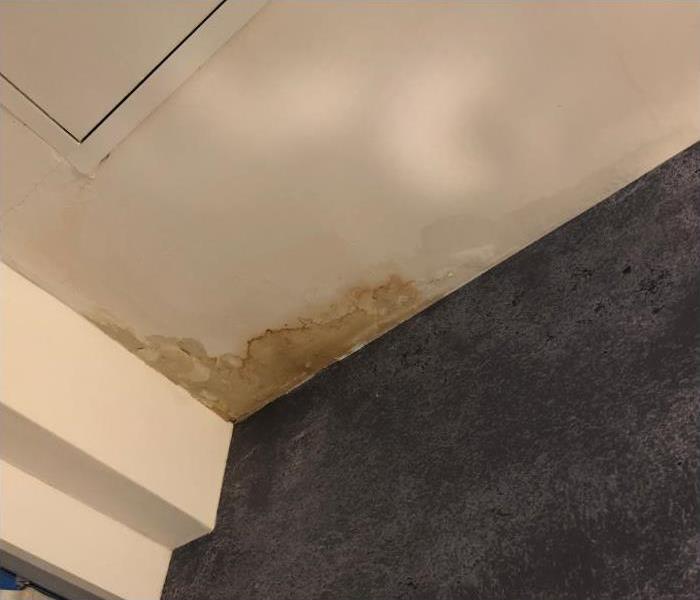 Protecting Your Home from Water Damage in Sandy, UT.
Protecting Your Home from Water Damage in Sandy, UT.
As winter transitions into spring, homeowners in Sandy, Utah, should be vigilant about the potential for water damage. The months of February and March bring a mix of snow, rain, and fluctuating temperatures, creating conditions that can lead to water-related issues in homes. Understanding these risks and implementing preventive measures can help safeguard your property.
Understanding the Weather Patterns
In February, Sandy experiences average daytime highs around 44°F and nighttime lows near 27°F. This month typically sees about 2.23 inches of precipitation, with approximately 0.60 inches falling as snow.
WEATHER FOR YOU
March brings slightly warmer temperatures, with average highs of 54°F and lows around 34°F. Precipitation increases to about 2.66 inches, with an average snowfall of 7.6 inches.
WEATHER FOR YOU
These conditions can lead to snowmelt and increased runoff, heightening the risk of water damage in homes.
Common Causes of Water Damage
Several factors contribute to water damage during these months:
- Snowmelt: As temperatures rise, accumulated snow begins to melt, increasing water runoff that can overwhelm drainage systems.
- Frozen Pipes: Cold temperatures can cause pipes to freeze and burst, leading to significant water damage.
- Roof Leaks: Accumulated snow and ice can cause roof damage, leading to leaks inside the home.
- Clogged Gutters: Debris-filled gutters can prevent proper drainage, causing water to seep into the home.
Preventive Measures
To mitigate the risk of water damage, consider the following steps:
- Inspect and Maintain Gutters: Regularly clean gutters and downspouts to ensure proper water flow. Consider installing gutter guards to prevent debris accumulation.
- Seal Entry Points: Check for and seal any gaps around windows, doors, and the foundation to prevent water infiltration.
- Insulate Pipes: Insulate exposed pipes in unheated areas to prevent freezing and potential bursts.
- Install Sump Pumps: In areas prone to flooding, a sump pump can help remove excess water from basements and crawl spaces.
- Maintain Landscaping: Ensure that the landscape slopes away from the foundation to direct water flow away from the home.
- Check Roofs and Attics: Inspect roofs for damage and ensure attics are properly ventilated to prevent ice dams.
- Monitor Weather Conditions: Stay informed about local weather forecasts to anticipate and prepare for potential storms or rapid snowmelt.
What to Do If Water Damage Occurs
Despite best efforts, water damage can still occur. If you experience water intrusion:
- Ensure Safety: Turn off electricity to affected areas to prevent electrical hazards.
- Stop the Source: If possible, identify and stop the source of water, such as turning off the main water supply.
- Document the Damage: Take photographs of the affected areas for insurance purposes.
- Contact Professionals: Reach out to a water damage restoration company like SERVPRO® of Sandy for immediate assistance.
- SERVPRO of Sandy: Your Partner in Water Damage Restoration
SERVPRO of Sandy specializes in water damage restoration, offering comprehensive services to restore your home to its pre-damage condition. Their process includes:
- Inspection and Assessment: Thorough evaluation of the damage to develop an effective restoration plan.
- Water Removal: Utilizing advanced equipment to extract standing water promptly.
- Drying and Dehumidification: Employing industrial-grade dehumidifiers and air movers to remove residual moisture.
- Cleaning and Sanitizing: Cleaning and sanitizing affected areas to prevent mold growth and odors.
- Restoration: Repairing and restoring damaged structures and belongings.
Their team is available 24/7 to respond to emergencies, ensuring a swift and efficient restoration process.
COMMERCIAL AND RESIDENTIAL RESTAURANTS
The months of February and March present unique challenges for homeowners in Sandy, Utah, due to the combination of snow, rain, and fluctuating temperatures. By proactively implementing preventive measures and understanding the risks, you can protect your home from potential water damage. In the event of water intrusion, partnering with professionals like SERVPRO of Sandy ensures a thorough and efficient restoration process, allowing you to return to normalcy with confidence.
How to Prevent Winter Storm Damage in Your Sandy Home
1/20/2025 (Permalink)
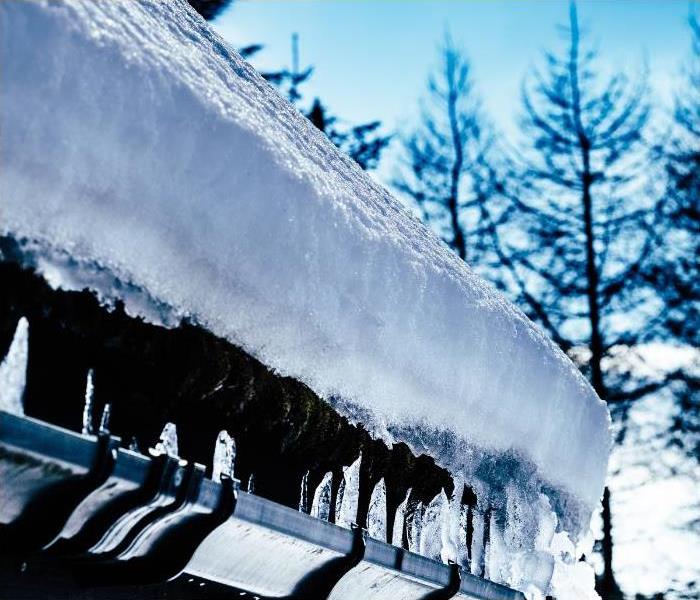 Prevent Winter Storm Damage in Sandy, UT.
Prevent Winter Storm Damage in Sandy, UT.
Winter in Sandy, Utah, brings breathtaking snow-capped mountains, holiday festivities, and outdoor adventures, but it also presents unique challenges for homeowners. The winter months can be hard on your home, especially with the possibility of severe winter storms. These storms can bring heavy snow, freezing temperatures, high winds, and even flooding — all of which can cause significant damage if you're not properly prepared.
The good news is that with a little foresight and preparation, you can reduce the risk of winter storm damage to your home. SERVPRO® of Sandy is here to share practical steps that will help you safeguard your property and keep your home safe and dry all winter long.
1. Inspect Your Roof and Gutters
Your roof is your first line of defense against the harsh winter weather, so it’s important to ensure it’s in good condition before the snow and ice arrive.
What to do:
- Check for missing or damaged shingles: A damaged roof can allow water to seep into your home, causing leaks and extensive damage to your attic, walls, and ceilings.
Inspect the flashing around chimneys, - vents, and skylights: These areas are particularly prone to leaks in winter. Make sure the flashing is secure and intact to prevent water from infiltrating.
- Clean your gutters: Clogged gutters can lead to ice dams, which occur when melting snow refreezes at the edge of the roof, causing water to back up and leak into your home. Make sure your gutters are free of leaves, twigs, and debris so that water can flow freely.
- Trim overhanging branches: Heavy snow and ice can weigh down tree branches, causing them to break and potentially fall on your roof. Trim any branches that are hanging too close to the roofline.
2. Winterize Your Pipes
Frozen pipes are a leading cause of water damage during the winter months. In Sandy, where temperatures can dip well below freezing, it’s especially important to take precautions to prevent your pipes from freezing and bursting.
What to do:
- Insulate exposed pipes: Pipes in attics, basements, and crawl spaces are particularly vulnerable to freezing. Insulate these pipes with foam or heat tape to help protect them from the cold.
- Let faucets drip: During extremely cold temperatures, allowing faucets to drip slightly can prevent pressure from building up inside the pipes and potentially causing them to burst.
- Seal air leaks: Check for gaps around windows, doors, and vents that could allow cold air to reach your pipes. Use caulk or weatherstripping to seal these gaps.
- Shut off exterior water sources: Disconnect garden hoses and drain outdoor faucets to prevent water from freezing inside the pipes.
3. Prepare for Snow and Ice Removal
Heavy snow accumulation and ice buildup can put a strain on your home’s structure and can also create hazardous conditions around your property. Proper snow and ice removal is key to preventing winter storm damage.
What to do:
- Keep snow from piling up on your roof: If your roof has a steep pitch, it may be difficult to remove snow yourself. If not, use a roof rake with a long handle to carefully remove snow from the eaves. This will help prevent ice dams and reduce the weight on the roof.
- Shovel your driveway and walkways regularly: This will not only prevent accidents but also keep ice from accumulating and causing structural stress on your home.
- Salt or sand high-traffic areas: Use ice melt or sand on your driveway, sidewalks, and steps to prevent ice from forming and creating slippery spots. Be sure to use an ice melt that’s safe for pets and plants.
4. Seal Your Home Against Cold Air
Keeping your home warm during winter storms can be challenging if there are drafts or gaps allowing cold air to infiltrate. Proper insulation and weatherproofing can make your home more energy-efficient, reduce your heating costs, and prevent ice and water damage.
What to do:
- Check for air leaks: Walk around your home and look for gaps around windows, doors, and electrical outlets. Seal these gaps with caulk or weatherstripping to prevent cold air from getting inside.
- Insulate your attic: Proper insulation in your attic can help prevent ice dams and keep your home warmer during winter storms. If your attic isn’t adequately insulated, consider adding more insulation to improve energy efficiency.
- Replace weatherstripping on doors and windows: If you notice that the weatherstripping around your doors and windows is worn out or cracked, replace it to keep the cold air out and the warmth in.
5. Maintain Your Heating System
Your furnace or heating system is essential for keeping your home comfortable and safe during winter storms. A malfunctioning heating system can lead to frozen pipes, increased risk of fires, and even carbon monoxide poisoning.
What to do:
- Schedule an annual furnace inspection: Before winter sets in, have your furnace inspected and serviced by a professional to ensure it’s working properly.
- Change your air filters: Clogged filters can restrict airflow and cause your heating system to work harder, which could lead to malfunctions or a breakdown. Change your filters regularly to maintain efficient operation.
- Test your smoke and carbon monoxide detectors: The winter months are a time when heating systems can cause hazardous situations like fires or carbon monoxide leaks. Test your detectors and change the batteries to ensure they’re working properly.
6. Prepare for Power Outages
Winter storms can often result in power outages, especially with the added weight of snow and ice on power lines and trees. Preparing for potential outages will help you stay safe and comfortable during the storm.
What to do:
- Stock up on emergency supplies: Keep a supply of non-perishable food, bottled water, flashlights, batteries, blankets, and other essentials in case of a prolonged power outage.
- Have a backup generator: If you live in an area prone to power outages, consider investing in a backup generator to keep your essential appliances running.
- Unplug electrical appliances: During a power outage, surges can damage electronics. Unplug any sensitive devices to prevent damage when the power is restored.
7. Review Your Homeowners Insurance Policy
Finally, it’s important to review your homeowners insurance policy to ensure that it covers winter storm damage. Many policies include coverage for snow and ice damage, but you may want to verify this and check for any exclusions or limitations.
What to do:
- Check for adequate coverage: Make sure your policy covers roof damage, water damage from burst pipes, and storm-related damage.
- Consider flood insurance: If you live in a flood-prone area, it’s worth looking into flood insurance, as standard homeowners policies don’t always cover flood-related damages.
Preparing your home for winter storms in Sandy, UT, is essential to preventing damage and keeping your family safe. By taking these preventative measures — from inspecting your roof and gutters to preparing for power outages — you can ensure your home remains secure, warm, and safe through the cold winter months.
In the event that winter storm damage does occur, SERVPRO® of Sandy is here to help with professional restoration services. Whether you need water damage cleanup, mold remediation, or fire damage restoration, our team is ready to restore your home “Like it never even happened.” Stay safe, and don’t hesitate to call us for assistance!
New Year, New Home Maintenance Resolutions: Start the Year Off Right with SERVPRO of Sandy
12/18/2024 (Permalink)
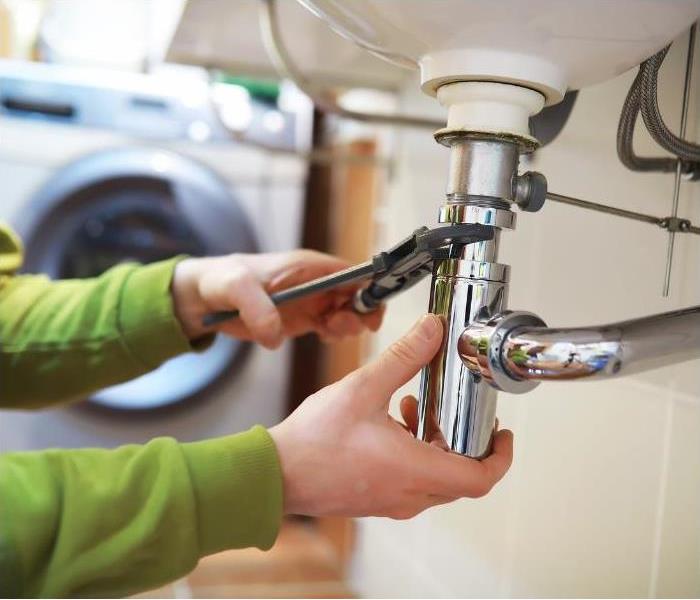 Maintenance Resolutions in Sandy.
Maintenance Resolutions in Sandy.
As we ring in the new year, many of us set new resolutions—whether it’s to eat healthier, exercise more, or improve our work-life balance. But one resolution that often gets overlooked is ensuring that our homes are safe, secure, and well-maintained. Home maintenance is crucial in avoiding unexpected disasters like water damage, fire, or mold growth, which can be stressful and expensive to repair.
In this blog, we’ll discuss simple and effective home maintenance resolutions that can help protect your home throughout the year. And, as always, SERVPRO® of Sandy is here to support you with restoration services if you experience any unfortunate damage.
1. Inspect and Maintain Your Plumbing
Water damage is one of the most common and costly home disasters, often caused by leaks, burst pipes, or malfunctioning appliances. Freezing temperatures in the winter months can be especially problematic in areas like Sandy, Utah. Pipes exposed to the cold are at risk of freezing and bursting, which can lead to severe water damage in your home.
- New Year’s Resolution: Take the time to inspect your plumbing. Look for any visible leaks or cracks in pipes and faucets. Ensure your water heater is in good condition and test for any potential issues, like sediment buildup, which can affect its efficiency.
- Tip: Insulate pipes in colder areas of your home, such as the garage, attic, or crawlspaces, to prevent freezing.
- SERVPRO’s Role: If you do experience water damage from burst pipes or leaks, SERVPRO of Sandy’s water damage restoration team is available 24/7 to help mitigate and repair the damage quickly.
2. Check Smoke Alarms and Fire Extinguishers
Fire damage can be devastating, and it’s essential to ensure your home is protected by properly functioning smoke detectors and fire extinguishers. According to the National Fire Protection Association (NFPA), working smoke alarms reduce the risk of dying in a fire by 50%.
- New Year’s Resolution: Make sure your smoke alarms have fresh batteries and are tested monthly. If your smoke alarms are more than 10 years old, it might be time to replace them. Don’t forget to check the expiration dates on your fire extinguishers, and ensure they are easily accessible.
- Tip: Create or review your fire escape plan with your family members, and practice it regularly.
- SERVPRO’s Role: If the worst happens and you face a fire emergency, SERVPRO of Sandy can help restore your home. From cleaning soot damage to odor removal and rebuilding, we are here to make it "Like it never even happened."
3. Seal Gaps and Insulate Your Home
Cold weather can lead to higher heating bills and discomfort if your home is not properly sealed and insulated. Gaps around windows, doors, and pipes can let cold air in, making it harder to keep your home warm. These gaps can also allow moisture to enter your home, leading to mold growth and potential structural damage.
- New Year’s Resolution: Go around your home and seal any drafts, whether from windows, doors, or other openings. Check your insulation in attics, basements, and crawlspaces to ensure it’s adequate for the winter months.
- Tip: If you live in an older home, you may want to consider upgrading your insulation to increase energy efficiency and reduce heating costs.
- SERVPRO’s Role: SERVPRO of Sandy also provides mold remediation services, should you discover any mold growth after water or moisture damage. Our team can help remove mold and restore your home.
4. Clean Gutters and Roof Maintenance
Clogged gutters are one of the leading causes of water damage in homes. When gutters are clogged with leaves, branches, or debris, rainwater cannot flow freely and may overflow, leading to water damage around your foundation, basement, or attic. Snow and ice accumulation can also cause damage to your roof, leading to leaks.
- New Year’s Resolution: Take the time to clean your gutters and downspouts at least twice a year—once in the fall and once in the spring. Make sure your roof is clear of debris, and inspect it for any missing or damaged shingles.
- Tip: If you're not comfortable cleaning gutters yourself, consider hiring a professional to handle the job safely.
- SERVPRO’s Role: In the event that water damage occurs due to clogged gutters or roof leaks, SERVPRO of Sandy offers water damage cleanup and restoration services. We work quickly to minimize the damage and restore your home.
5. Review Your Emergency Plan and Prepare for Disasters
While it’s impossible to predict when a disaster might strike, being prepared can make all the difference. Whether it’s a fire, water damage, or a storm, having an emergency plan in place will help you respond quickly and efficiently.
- New Year’s Resolution: Review your home emergency plan with your family. Ensure everyone knows what to do and where to go in case of an emergency. Consider setting up an emergency supply kit with essentials like flashlights, bottled water, non-perishable food, and first aid supplies.
- Tip: Make sure your insurance policy is up-to-date and covers potential disasters like flooding, water damage, and fire.
- SERVPRO’s Role: SERVPRO of Sandy is available 24/7 to help you recover from any disaster. Whether you need storm damage restoration, fire damage cleanup, or water damage repair, we are ready to help restore your home and peace of mind.
6. Regularly Inspect Your HVAC System
Your HVAC system works hard to keep your home comfortable, but it’s important to maintain it properly to ensure its efficiency and prevent fire hazards. Dirty filters, blocked ducts, and unmaintained heating units can lead to breakdowns and even fires.
- New Year’s Resolution: Schedule an annual inspection of your HVAC system. Change air filters regularly and ensure your heating system is operating safely.
- Tip: Clean the vents around your home to ensure proper airflow and avoid dust buildup.
- SERVPRO’s Role: SERVPRO of Sandy provides fire and smoke damage restoration. If your HVAC system is compromised in a fire or other disaster, we can help restore it to its original condition.
Christmas Safety Tips for SERVPRO of Sandy in Sandy, UT
11/23/2024 (Permalink)
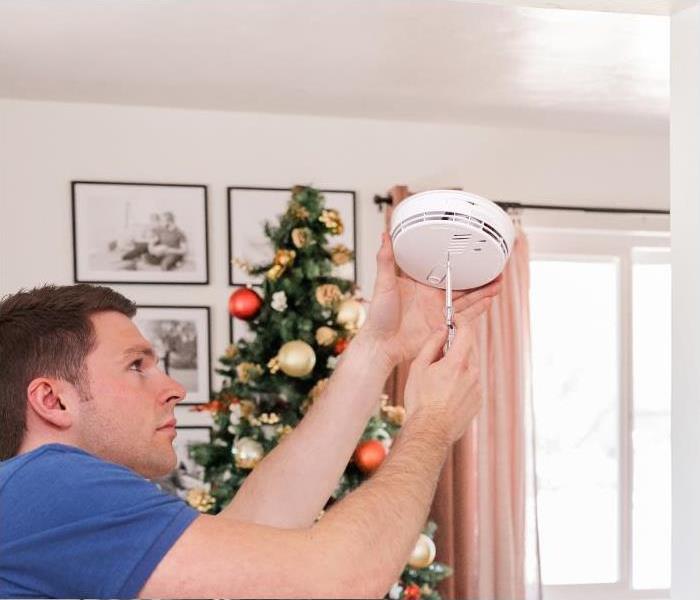 Christmas Safety in Sandy, UT.
Christmas Safety in Sandy, UT.
As the holiday season approaches, Sandy, UT, is buzzing with excitement. From festive decorations to family gatherings, Christmas brings joy, but it also presents potential safety hazards. The season of giving and celebration is not without its risks, such as fire hazards, water damage, and accidents that can occur when homes are filled with decorations, cooking, and visitors. At SERVPRO® of Sandy, we want to make sure you have a safe and happy holiday season. Here are some Christmas safety tips to keep in mind to protect your home and loved ones.
1. Fire Safety with Christmas Decorations
Christmas decorations are a beautiful way to bring the spirit of the season into your home, but they can also be fire hazards if not used properly. Christmas trees, lights, and candles all contribute to the seasonal ambiance, but they also need to be handled with care.
Tips for Fire Safety:
Choose a Fresh Tree: If you opt for a real tree, ensure it is fresh. Fresh trees are less likely to catch fire than dry ones. Check for a tree with vibrant green needles and a sticky trunk.
Keep Trees Watered: A dry tree is a major fire risk. Make sure to water your tree daily to prevent it from drying out.
Properly Dispose of Your Tree: After Christmas, get rid of your tree immediately. Do not leave it inside your home as it will dry out over time and become a fire hazard.
Inspect Lights: Before hanging lights, inspect them for any frayed wires or broken bulbs. Replace damaged lights to prevent electrical fires.
Turn Off Lights: Always turn off Christmas tree lights when going to bed or leaving the house. A simple oversight can lead to a dangerous fire.
Avoid Overloading Circuits: Overloading electrical circuits with too many lights or decorations can trigger fires. Plug lights into properly rated extension cords and outlets.
2. Safe Cooking Practices
Holiday meals are a tradition in many homes, but cooking during Christmas can be risky. With the increased use of stoves, ovens, and deep fryers, the potential for kitchen fires rises.
Cooking Safety Tips:
Stay in the Kitchen: Never leave the stove or oven unattended while cooking. If you must leave, ask someone to watch your cooking.
Use a Timer: For dishes that require long cooking times, set a timer as a reminder to check the food periodically.
Keep Flammable Items Away: Keep towels, oven mitts, paper towels, and other flammable materials away from hot cooking surfaces.
Don’t Overfill Fryers: When using a deep fryer, never overfill it with oil, as this can lead to dangerous spills and fires. Always follow the manufacturer's instructions.
Check Appliances for Damage: Before using kitchen appliances, inspect them for damage, and ensure they are clean. A dirty oven or stovetop can increase the risk of fires.
3. Preventing Water Damage
Christmas celebrations often involve using additional decorations like artificial snow, as well as hosting family members who may bring in the elements of winter from outside. If proper precautions are not taken, water damage can occur.
Water Damage Prevention Tips:
Check Roof for Leaks: The cold, snowy winters in Sandy, UT, can lead to ice dams and leaks in your roof. Before the snow starts falling, inspect your roof for any existing issues, and address them before they become bigger problems.
Inspect Pipes: Frozen pipes can burst when the temperatures drop, leading to water damage in your home. Before the cold weather sets in, ensure that pipes are insulated, especially in unheated areas like attics and crawl spaces.
Use a Dehumidifier: Humidity levels tend to rise in winter due to activities like cooking, showering, and holiday décor. Use a dehumidifier in areas that are more prone to moisture accumulation to prevent mold and water damage.
Check Your Sump Pump: If you have a basement, check your sump pump to ensure it is working properly before the winter season. A malfunctioning sump pump can result in flooding during heavy winter rains or melting snow.
4. Carbon Monoxide Safety
With the cold temperatures in Sandy, many people use their fireplaces, space heaters, or furnaces to stay warm. While these can be great for heating your home, they can also pose a risk of carbon monoxide poisoning if not properly maintained.
Carbon Monoxide Safety Tips:
Install Carbon Monoxide Detectors: Ensure that carbon monoxide detectors are installed in key areas, including near sleeping areas and in hallways. Test them regularly and replace batteries as needed.
Maintain Heaters and Chimneys: Have your heating systems and chimney professionally cleaned and inspected each year to ensure they are functioning properly.
Ventilate Properly: If you use space heaters, make sure they are placed in well-ventilated areas, and always turn them off when you leave the room or go to bed.
5. Preventing Slips and Falls
Winter weather in Sandy can be unpredictable, and it often brings snow and ice. These conditions can make walking outside dangerous, increasing the risk of slips and falls.
Slips and Falls Prevention Tips:
Clear Walkways: Keep your driveway, walkway, and entryways clear of snow and ice. Use salt or sand to improve traction.
Install Handrails: If you have stairs outside, ensure they have sturdy handrails to provide support for those who may need it.
Wear Proper Footwear: Make sure that everyone in your household wears shoes with good traction when going outside during winter weather.
Use a Sturdy Ladder: When decorating your home for the holidays, use a sturdy, properly positioned ladder. Never stand on a chair or table to hang decorations, as it increases the risk of falling.
6. Pet Safety
If you have pets, Christmas can be a stressful time for them. With guests coming and going, changes to their routines, and new decorations in your home, it’s important to ensure your pets are safe and comfortable during the holidays.
Pet Safety Tips:
Keep Toxic Plants Away: Some common holiday plants, such as poinsettias, mistletoe, and holly, can be toxic to pets. Keep these plants out of reach or opt for artificial versions.
Secure Ornaments and Decorations: Pets may be curious about the shiny baubles and ribbons on your tree. Make sure decorations are securely fastened to prevent pets from chewing on them or knocking them over.
Create a Safe Space: If the holiday gatherings are overwhelming for your pets, set up a quiet space with their bed and toys where they can retreat to when they need a break.
7. Holiday Travel Safety
Many people travel during the holiday season, whether it’s to visit family or to get away. While traveling can be fun and exciting, it’s important to take steps to protect your home when you're away.
Travel Safety Tips:
Check Security Systems: Before you leave for vacation, check that your security system is working and that all doors and windows are securely locked.
Set Lights on Timers: To deter burglars, set some lights or electronic devices on timers to give the appearance that someone is home.
Shut Off Water: If you're leaving for an extended period, consider shutting off the water supply to prevent leaks or bursts while you're away.
By following these Christmas safety tips, you can ensure that your holiday season in Sandy, UT, is safe, enjoyable, and free from accidents or damage. At SERVPRO of Sandy, we care about your home and family’s well-being. If you do experience fire, water, or mold damage during the holidays, don’t hesitate to call us for expert restoration services to make your home “Like it never even happened.”
From all of us at SERVPRO of Sandy, we wish you a Merry Christmas and a safe, healthy New Year!
Fall Home Maintenance Tips for Sandy, UT: Preparing Your Home for Winter
10/22/2024 (Permalink)
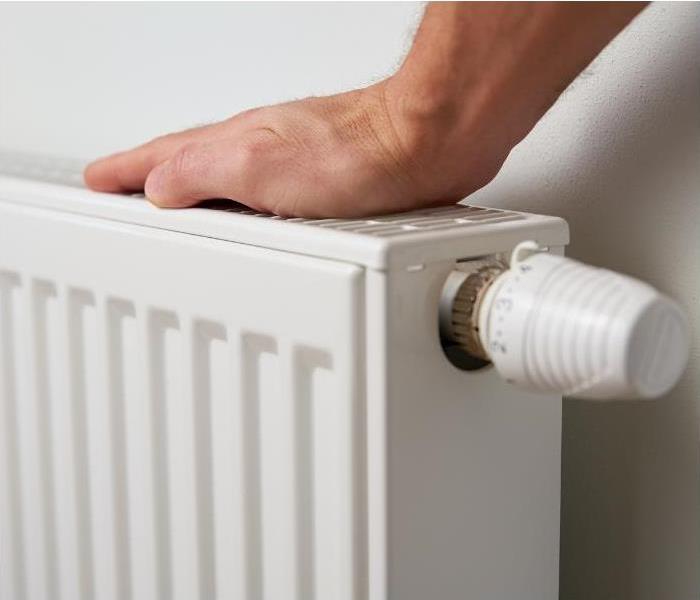 Fall Home Maintenance in Sandy, UT
Fall Home Maintenance in Sandy, UT
As the leaves begin to change color and the air turns crisp in Sandy, Utah, it's a clear sign that autumn is here. With winter just around the corner, now is the perfect time to focus on fall home maintenance. Proper upkeep not only ensures your home remains a warm haven during the chilly months but also prevents potential issues that could arise from neglecting essential tasks. Here are some comprehensive fall home maintenance tips to help you prepare your home for winter.
1. Inspect Your Roof and Gutters
Why It’s Important
Your roof is your home’s first line of defense against the elements, especially during harsh winter weather. Ice, snow, and freezing temperatures can exacerbate existing issues, leading to leaks and costly repairs.
What to Do
Visual Inspection: Look for missing, cracked, or curled shingles. If you're comfortable, use binoculars to check from the ground; otherwise, hire a professional.
Clean Gutters: Remove leaves and debris from gutters to ensure proper drainage. Clogged gutters can cause water to back up and freeze, leading to roof damage and ice dams.
Check Downspouts: Make sure downspouts direct water away from your home’s foundation to prevent flooding.
2. Prepare Your Heating System
Why It’s Important
A reliable heating system is essential for comfort during the cold months. Regular maintenance can help prevent unexpected breakdowns when you need your furnace the most.
What to Do
Change Filters: Replace your air filters to improve air quality and ensure efficient airflow. Clogged filters can strain your heating system and raise energy costs.
Schedule a Professional Inspection: Consider hiring a technician for a thorough inspection and cleaning of your heating system. They can identify potential issues and ensure your system is safe and efficient.
3. Seal Windows and Doors
Why It’s Important
Drafts from windows and doors can lead to significant heat loss, resulting in higher energy bills and an uncomfortable living environment.
What to Do
Check for Gaps: Inspect the edges of windows and doors for cracks or gaps.
Apply Caulk and Weather Stripping: Use caulk to fill in any gaps and apply weather stripping around doors to create a tighter seal. This simple action can dramatically improve your home’s energy efficiency.
4. Prepare Your Landscaping
Why It’s Important
Proper fall landscaping not only keeps your yard looking neat but also protects your plants from harsh winter conditions.
What to Do
Rake Leaves: Regularly remove fallen leaves to prevent mold growth and smothering your lawn. Consider composting leaves to create nutrient-rich soil for spring.
Trim Plants and Shrubs: Cut back any dead or overgrown plants to promote healthy growth in the spring. Pruning now can prevent damage from heavy snow.
Mulch: Apply mulch around your plants to insulate their roots and retain moisture throughout the winter.
5. Inspect and Store Outdoor Equipment
Why It’s Important
Taking care of your outdoor equipment can extend its life and ensure it’s ready for use in the spring.
What to Do
Lawn Equipment: Drain fuel from lawn mowers, trimmers, and other gas-powered equipment. Store them in a dry, protected area.
Hoses: Disconnect and drain garden hoses to prevent freezing. Store them in a shed or garage.
Patio Furniture: Consider covering or storing outdoor furniture to protect it from the elements and prolong its lifespan.
6. Check Your Smoke and Carbon Monoxide Detectors
Why It’s Important
With heating systems running more frequently during winter, it’s crucial to ensure that your smoke and carbon monoxide detectors are in good working condition to protect your family from potential hazards.
What to Do
Test Your Detectors: Press the test button on each unit to ensure it’s functioning.
Change Batteries: Replace batteries in each detector. Consider doing this twice a year—once in the spring and once in the fall—to keep them operational.
Replace Old Units: If your detectors are over ten years old, consider replacing them for the latest safety technology.
7. Review Emergency Preparedness Plans
Why It’s Important
Sandy experiences winter weather that can sometimes lead to power outages and emergencies. Being prepared can save you time and stress during unexpected situations.
What to Do
Emergency Kit: Ensure you have a well-stocked emergency kit with essentials like flashlights, batteries, bottled water, and non-perishable food items.
Plan for Power Outages: If you rely on electricity for heating, consider purchasing a generator or making arrangements with neighbors for assistance in case of outages.
8. Clean and Maintain Your Fireplace
Why It’s Important
A fireplace can be a comforting source of heat during winter, but improper maintenance can lead to dangerous situations.
What to Do
Chimney Inspection: If you have a wood-burning fireplace, have your chimney inspected and cleaned by a professional to remove creosote buildup.
Check for Blockages: Ensure the flue is clear and functional before using your fireplace for the first time this season.
Store Firewood Safely: Keep firewood stored in a dry place, ideally outside and off the ground to prevent moisture absorption.
9. Prepare for Winter Recreation
Why It’s Important
Sandy offers plenty of opportunities for outdoor winter activities, from skiing to snowshoeing. Being prepared can enhance your enjoyment of these experiences.
What to Do
Service Outdoor Gear: Check your skiing or snowboarding gear for any needed repairs or servicing.
Stock Up on Supplies: Ensure you have winter gear such as snow shovels, salt for ice, and appropriate winter clothing ready for use.
As fall unfolds in Sandy, UT, taking these maintenance steps can make a significant difference in how your home withstands the winter months. By investing a bit of time and effort now, you can enhance your home’s efficiency, safety, and comfort for you and your family.
Remember, if you’re not comfortable performing any of these tasks or need assistance, it’s always a good idea to consult local professionals who can help ensure your home is ready for whatever winter has in store. With a well-prepared home, you can fully enjoy the beauty and tranquility of the season.
Mold Damage Restoration: How Hidden Leaking Pipes Can Affect Your Home in Sandy, UT
9/20/2024 (Permalink)
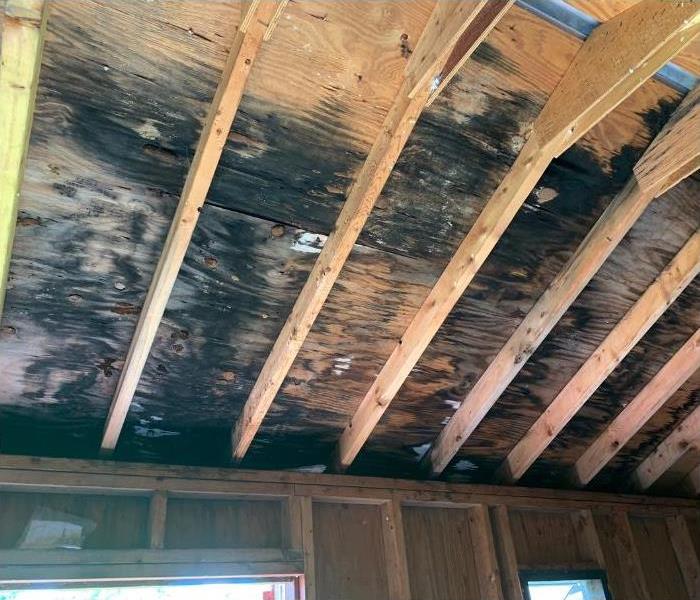 Mold Damage Restoration in Sandy, UT
Mold Damage Restoration in Sandy, UT
When it comes to home maintenance, a hidden leaking pipe can be a homeowner's worst nightmare. In Sandy, UT, where the climate can exacerbate water damage issues, understanding how these hidden leaks can lead to severe mold problems is crucial. Mold damage restoration requires a comprehensive approach, especially when the source of the moisture is elusive. Here’s what you need to know about dealing with mold damage caused by hidden leaking pipes and how to handle the restoration process effectively.
The Hidden Threat: How Leaking Pipes Cause Mold Growth
Many homeowners in Sandy may not realize that their pipes are leaking until it's too late. A hidden leak—often in walls, ceilings, or floors—can go unnoticed for a long time. These leaks provide a constant source of moisture, which is a key ingredient for mold growth. Mold spores, which are present in the air everywhere, can settle on damp surfaces and start growing rapidly.
The conditions created by a hidden leak are ideal for mold proliferation. Mold needs three things to thrive:
Moisture: The ongoing leak provides a consistent supply of water.
Temperature: Most mold grows best in temperatures between 60-80°F.
Organic Material: Building materials like wood, drywall, and insulation are perfect food sources for mold.
When a leak occurs behind walls or under floors, it can be difficult to detect until the mold has already started to spread. By the time visible signs appear—such as discoloration or a musty smell—the mold problem may be extensive and challenging to address.
Identifying the Signs of Mold Damage
Detecting mold damage early can prevent extensive repair work and health risks. Here are some common signs that indicate a hidden leak might be causing mold damage in your Sandy home:
Musty Odors: A persistent musty smell, even if you can’t see any mold, is often an early warning sign.
Discolored Walls or Ceilings: Yellow, brown, or black spots on walls or ceilings can indicate mold growth behind surfaces.
Peeling Paint or Wallpaper: Water damage often causes paint or wallpaper to peel away.
Warped or Sagging Floors: Moisture from a leak can cause flooring to buckle or sag.
Increased Allergies: Unexplained allergy symptoms or respiratory issues can be a sign of mold exposure.
If you notice any of these signs, it’s essential to act quickly. The longer you wait, the more extensive the damage can become.
Steps to Address Mold Damage from Hidden Leaking Pipes
Locate the Source of the Leak:
The first step in mold damage restoration is finding and fixing the source of the leak. This often requires professional assistance, as leaks behind walls or under floors can be challenging to pinpoint. A plumber or a water damage specialist can use specialized tools like moisture meters and thermal imaging cameras to locate the source.
Fix the Leak:
Once the source is identified, it must be repaired immediately. This might involve replacing damaged pipes, sealing leaks, or performing other necessary plumbing repairs. Addressing the leak promptly helps prevent further water damage and mold growth.
Remove Affected Materials:
After fixing the leak, the next step is to remove and dispose of any materials that have been severely damaged by water and mold. This might include drywall, insulation, or flooring. In cases where the mold infestation is severe, it’s crucial to use protective gear and follow proper procedures to avoid spreading spores.
Clean and Dry the Area:
Thoroughly clean the affected area using specialized cleaning agents designed to kill mold spores. Dry the area completely using dehumidifiers and fans. Mold thrives in damp environments, so ensuring that the area is dry is essential for preventing future growth.
Treat the Mold:
For areas with visible mold, professional mold remediation services are often required. Mold remediation involves more than just cleaning; it includes treating surfaces with antifungal solutions to kill mold spores and prevent future growth. In some cases, professional services may be necessary to ensure that all mold is effectively removed.
Repair and Restore:
Once the mold has been removed and the area is dry, you can begin repairs. This involves replacing damaged materials such as drywall, insulation, and flooring. Ensure that any repairs are done to prevent future leaks and moisture issues.
Preventing Future Mold Damage
To prevent future mold issues caused by hidden leaks, consider these proactive measures:
Regular Inspections:
Conduct regular inspections of your plumbing system to identify any potential issues before they become major problems. Pay attention to areas that are prone to leaks, such as under sinks and around appliances.
Maintain Proper Ventilation:
Ensure that your home is well-ventilated to reduce humidity levels. Use exhaust fans in areas like bathrooms and kitchens, and consider using a dehumidifier if you live in a particularly humid area.
Address Water Damage Immediately:
If you experience any form of water damage, address it immediately. Quick action can prevent minor issues from becoming major problems.
Insulate Pipes:
Properly insulate pipes to prevent freezing and potential leaks, especially in colder months.
Mold damage restoration in Sandy, UT, starts with addressing the root cause of the problem—hidden leaking pipes. By understanding the risks and signs of mold damage, you can take proactive steps to protect your home and ensure a thorough restoration process. If you suspect mold damage, don’t hesitate to seek professional help to address the issue effectively and prevent future problems. Remember, timely intervention is key to maintaining a safe and healthy home environment.
The Unseen Dangers of Natural Flooding in Sandy, UT: Why It's More Troublesome Than Indoor Water Damage
8/28/2024 (Permalink)
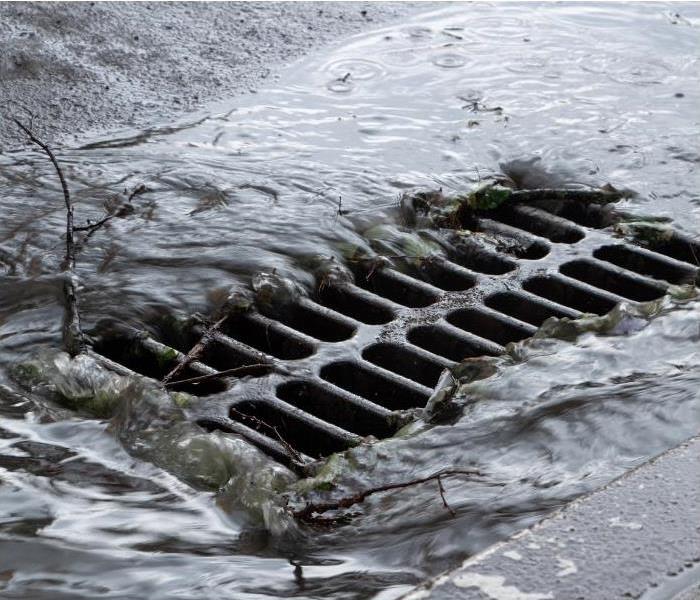 Flooding in Sandy, UT
Flooding in Sandy, UT
When disaster strikes, and your Sandy, UT, home is affected by water damage, it can be a distressing experience. However, not all water damage is created equal. The source of the water that invades your home plays a crucial role in determining the severity and complexity of the damage. Flooding from natural sources, such as heavy rainfall or a river overflowing its banks, presents a far greater challenge than water damage from a broken pipe or an overflowing dishwasher. The reason lies in the multiple contamination sources and the potential long-term consequences that natural flooding can bring.
The Differences Between Clean Water Damage and Natural Flooding
Water damage from a broken pipe or an overflowing dishwasher typically involves "clean water," meaning it comes from a sanitary source. While clean water can still cause significant damage if not promptly addressed, the risks are relatively lower compared to natural floodwaters. Clean water damage is generally classified as Category 1 water, which poses little to no immediate health risk.
In contrast, natural flooding introduces a host of contaminants into your home. Floodwaters often carry a mix of debris, chemicals, sewage, and biological contaminants, making the situation much more hazardous. This type of water damage is classified as Category 3 water, also known as "black water," due to the high level of contamination it contains. The presence of these contaminants not only complicates the cleanup process but also poses serious health risks to you and your family.
The Health Risks Associated With Natural Flooding
When your home is flooded by natural sources, the water is not just water—it's a toxic mixture of pollutants that can have serious implications for your health. Contaminants found in natural floodwaters may include:
Sewage: Floodwaters often overwhelm sewer systems, leading to the release of raw sewage into the environment. This sewage can contain harmful pathogens such as bacteria, viruses, and parasites that can cause illnesses like gastroenteritis, hepatitis, and respiratory infections.
Chemical Contaminants: Floodwaters can pick up chemicals from agricultural runoff, industrial sites, and even household products. These chemicals can be toxic and may cause skin irritation, respiratory issues, and long-term health effects if you are exposed to them.
Mold and Mildew: The presence of moisture in your home after a flood creates an ideal environment for mold and mildew growth. These fungi can spread quickly, producing spores that can cause allergic reactions, asthma attacks, and other respiratory problems.
Debris and Sharp Objects: Floodwaters often carry debris, including sharp objects like glass, metal, and wood. These can cause physical injuries if you come into contact with them during cleanup efforts.
Given these risks, it is crucial to approach natural flooding with caution and prioritize professional assistance to ensure your home is thoroughly decontaminated and safe to inhabit.
Structural Damage and Long-Term Consequences
The water from a broken pipe or an overflowing dishwasher typically stays confined to certain areas of your home and can be cleaned up relatively quickly if addressed promptly. On the other hand, natural flooding is far more invasive. Floodwaters can infiltrate every nook and cranny of your home, seeping into walls, floors, and even the foundation. This widespread infiltration can lead to severe structural damage that may not be immediately apparent.
Foundation Damage: Natural flooding can cause erosion of the soil around your home's foundation, leading to shifts and cracks that compromise the structural integrity of your home. Over time, this can result in uneven floors, cracked walls, and even the risk of a partial or total collapse of the structure.
Wood Rot and Warping: Prolonged exposure to water causes wood to rot and warp. This can weaken the structural elements of your home, such as beams, joists, and framing, leading to expensive repairs and potential safety hazards.
Electrical System Damage: Floodwaters can easily short-circuit your home's electrical system, creating a fire hazard and necessitating extensive repairs or replacements. It is essential to have a qualified electrician inspect your electrical system after a flood to ensure it is safe.
Hidden Mold Growth: As mentioned earlier, natural flooding creates an environment conducive to mold growth. However, mold doesn’t always appear in visible areas. It can thrive behind walls, under floors, and in other hidden spaces, posing a long-term health risk if not properly remediated.
The Importance of Professional Restoration Services
Dealing with natural flooding requires a level of expertise and equipment that goes beyond the capabilities of a typical homeowner. Professional restoration services, such as those offered by SERVPRO®, are essential for addressing the complexities of natural flood damage. Here’s why:
Thorough Assessment and Water Extraction: SERVPRO professionals begin by assessing the extent of the damage and identifying all areas affected by floodwaters. Using advanced water extraction equipment, they remove as much water as possible to minimize further damage.
Decontamination and Sanitization: Given the contamination present in natural floodwaters, thorough decontamination is crucial. SERVPRO uses industry-approved techniques and EPA-registered disinfectants to sanitize your home, ensuring that all harmful pathogens and chemicals are eliminated.
Mold Remediation: SERVPRO professionals are trained to identify and remediate mold growth. They use specialized equipment to detect hidden moisture and apply effective mold remediation techniques to prevent further spread and ensure a safe living environment.
Structural Drying and Repair: After water extraction and decontamination, SERVPRO uses industrial-grade drying equipment to remove remaining moisture from your home. They also assess and repair any structural damage, including foundation issues, wood rot, and electrical system concerns.
Restoration and Reconstruction: In cases of severe damage, restoration may involve reconstruction of certain areas of your home. SERVPRO provides comprehensive services, including rebuilding and restoring your home to its pre-flood condition.
Natural flooding is a serious event that can have far-reaching consequences for your home and your health. The contamination from multiple sources, combined with the potential for extensive structural damage, makes it a far more challenging situation than dealing with water damage from a clean source like a broken pipe or dishwasher overflow. When faced with natural flooding, it’s essential to seek professional help to ensure that your home is thoroughly decontaminated, repaired, and restored.
In Sandy, UT, SERVPRO is your trusted partner in flood damage restoration. Our team of professionals is equipped with the knowledge, tools, and experience to handle the complexities of natural flood damage, ensuring that your home is safe and restored to its original condition. When disaster strikes, don’t hesitate to reach out to SERVPRO for the help you need.
Essential Fire Safety Tips for Residential Homes in Sandy, UT
7/22/2024 (Permalink)
 Key Fire Safety Tips for Homes in Sandy, UT
Key Fire Safety Tips for Homes in Sandy, UT
Fire safety is a critical concern for homeowners everywhere, including those in Sandy, UT. Taking proactive measures to prevent fires and knowing how to react in case of a fire can save lives and property. Here are some comprehensive fire safety tips tailored for residents of Sandy, UT:
1. Install Smoke Alarms
Smoke alarms are your first line of defense against fires. Install smoke alarms on every level of your home, including inside bedrooms and near sleeping areas. Test them monthly and replace batteries at least once a year. Consider upgrading to interconnected alarms so that when one sounds, they all sound.
2. Have a Fire Escape Plan
Create a fire escape plan with your family and practice it regularly. Identify two ways out of every room, especially bedrooms. Designate a meeting place outside the home where everyone will gather after escaping a fire. Ensure that everyone knows how to call 911 or the local emergency number.
3. Install Carbon Monoxide Detectors
Carbon monoxide (CO) is an odorless, colorless gas that can be deadly. Install CO detectors near sleeping areas and on every level of your home, especially near fuel-burning appliances. Test them monthly and replace batteries as needed.
4. Maintain Heating Equipment
Ensure that all heating equipment, including furnaces, chimneys, and space heaters, are professionally inspected and maintained annually. Keep flammable materials, such as curtains and furniture, away from heat sources.
5. Practice Safe Cooking Habits
Cooking is a leading cause of home fires. Never leave cooking food unattended, especially when frying or broiling. Keep flammable items away from the stove, and ensure that pot handles are turned inward to prevent accidental spills.
6. Use Electrical Appliances Safely
Inspect electrical cords for damage or fraying, and replace any that are worn out. Avoid overloading outlets or using extension cords as permanent wiring. Unplug small appliances when not in use and teach children not to play with electrical cords or outlets.
7. Store Flammable Materials Properly
Keep flammable liquids, such as gasoline, propane, and paint thinner, in approved containers and store them away from heat sources and living areas. Dispose of oily rags in metal containers with tight-fitting lids.
8. Be Cautious with Candles and Smoking
Keep candles in sturdy holders on a stable surface, away from flammable materials and out of reach of children and pets. Extinguish candles before leaving a room or going to bed. If you smoke, do so outside, and use deep ashtrays filled with sand to extinguish cigarette butts.
9. Maintain a Fire Extinguisher
Keep a fire extinguisher in the kitchen, garage, and any other areas prone to fires. Learn how to use it properly and ensure it is regularly inspected and recharged by a professional.
10. Secure Your Home Against Wildfires
Living in Sandy, UT, means being prepared for potential wildfires. Create defensible space around your home by clearing debris and vegetation. Use fire-resistant materials for roofing and siding. Have an evacuation plan in place in case of a wildfire threat.
11. Educate Your Family
Educate everyone in your household about fire safety practices. Teach children to recognize the sound of smoke alarms and what to do if they hear one. Discuss the importance of fire safety and regularly review your family's fire escape plan.
12. Consider Home Security Systems
Some home security systems offer fire detection capabilities. Consider installing one that can alert emergency services in case of a fire, even when you're not home.
By implementing these fire safety tips tailored for residential homes in Sandy, UT, you can significantly reduce the risk of fire and protect your loved ones and property. Remember, fire prevention starts with awareness, preparation, and vigilance. Take the necessary steps today to ensure a safer tomorrow for your home and family.
A Look into SERVPRO's Storm Damage Restoration Process in Sandy, UT
7/5/2024 (Permalink)
 Storm Damage Restoration in Sandy, UT
Storm Damage Restoration in Sandy, UT
In the serene suburbs of Sandy, Utah, the tranquility of everyday life can sometimes be disrupted by the unpredictable forces of nature. From sudden thunderstorms to heavy snowfall, the residents of Sandy know all too well the impact that severe weather can have on their homes and communities. When disaster strikes, one company stands ready to restore hope and repair the damage: SERVPRO.
Understanding the Impact of Storm Damage
The aftermath of a storm can leave a trail of destruction in its wake. From flooded basements to damaged roofs and everything in between, storm damage can vary widely in its severity and scope. In Sandy, where the weather can change dramatically throughout the year, homeowners and businesses alike face the constant threat of wind, rain, and snow wreaking havoc on their properties.
Immediate Response and Assessment
SERVPRO's storm damage restoration process begins with a swift response. When a call comes in, their team mobilizes quickly to assess the situation and determine the necessary steps to mitigate further damage. In Sandy, where time is often of the essence due to the rapid onset of weather-related issues, this prompt response is crucial in preventing secondary damage such as mold growth or structural instability.
Upon arrival, SERVPRO technicians conduct a thorough inspection of the property. This assessment includes identifying areas that have been directly impacted by the storm, evaluating the extent of the damage, and developing a comprehensive restoration plan tailored to the specific needs of the property.
Water Extraction and Drying
One of the most common issues homeowners face after a storm is water damage. Whether it's from a burst pipe, a leaking roof, or flooding, excess water can quickly seep into walls, floors, and furniture, causing extensive damage if not promptly addressed.
SERVPRO utilizes state-of-the-art equipment for water extraction and drying. Powerful pumps and vacuums are employed to remove standing water swiftly and efficiently. Moisture meters and infrared cameras are used to detect hidden moisture pockets that could lead to future problems if left untreated. Once excess water has been removed, industrial-grade dehumidifiers and air movers are brought in to dry the affected areas thoroughly.
Restoration of Structural Damage
In cases where storms have caused structural damage, such as compromised roofs or weakened walls, SERVPRO's team of skilled professionals in Sandy are equipped to handle even the most challenging repairs. They work closely with local contractors and engineers to ensure that all repairs are completed to code and restore the structural integrity of the property.
From boarding up windows to tarping roofs, SERVPRO takes immediate action to secure the property and prevent further damage. Their goal is not only to restore the home or business to its pre-storm condition but also to provide peace of mind to property owners during the restoration process.
Cleaning and Content Restoration
Storm damage often leaves behind a trail of debris and contamination. SERVPRO's cleaning services extend beyond just removing visible dirt and debris. They employ specialized techniques and cleaning agents to sanitize and deodorize affected areas. Upholstery, carpets, and other belongings damaged by water or debris are carefully cleaned and restored whenever possible.
For items that require off-site restoration, SERVPRO offers pack-out services. This involves carefully packing and transporting belongings to a secure facility where they can be cleaned, dried, and restored using advanced techniques.
Community Support and Rebuilding Together
Beyond their technical expertise, SERVPRO is committed to supporting the Sandy community during times of crisis. They collaborate with local authorities, insurance companies, and community organizations to streamline the restoration process and ensure that homeowners and businesses receive the assistance they need promptly.
SERVPRO's involvement goes beyond restoring individual properties; they contribute to rebuilding the community as a whole. Whether through sponsoring local events or providing educational resources on disaster preparedness, SERVPRO strives to strengthen community resilience in Sandy and beyond.
In Sandy, Utah, where the beauty of nature meets the unpredictability of the weather, SERVPRO stands as a beacon of hope for homeowners and businesses facing the aftermath of storms. Through their meticulous storm damage restoration process, they not only repair physical damage but also restore peace of mind to those affected. From immediate response and assessment to comprehensive restoration and community support, SERVPRO's commitment to excellence shines through in every storm they encounter. When disaster strikes, Sandy residents can rest assured that SERVPRO will be there, ready to restore their homes and their lives.
7 Tips to Reduce Flooding Risks in Sandy, UT
5/17/2024 (Permalink)
 Mitigating Flood Risks in Sandy, UT
Mitigating Flood Risks in Sandy, UT
Sandy, Utah, nestled at the base of the picturesque Wasatch Mountains, is a vibrant community that offers its residents a high quality of life. However, like many areas, Sandy is not immune to the threats posed by flooding. With its proximity to the Jordan River and the potential for heavy rainfall and snowmelt, flooding can pose significant risks to both property and lives in this area. Fortunately, there are proactive steps residents can take to mitigate these risks and protect their homes and families. In this blog, we'll explore seven tips to reduce flooding risks in Sandy, UT.
1. Stay Informed: Knowledge is Power
One of the most crucial steps in preparing for flooding is to stay informed about potential risks and warning signs. Sandy residents should familiarize themselves with the local floodplain maps, which identify areas prone to flooding. Additionally, signing up for emergency alerts and notifications from the city or county can provide early warnings of impending flood events. By staying informed, residents can take proactive measures to protect themselves and their property.
2. Invest in Flood Insurance
Many homeowners mistakenly believe that their standard homeowner's insurance policy will cover flood damage. However, most policies do not include flood coverage, leaving homeowners vulnerable to significant financial losses in the event of a flood. To protect against this risk, residents in flood-prone areas like Sandy should consider purchasing flood insurance through the National Flood Insurance Program (NFIP). While it may require an additional investment, the peace of mind and financial protection it offers are invaluable.
3. Maintain Proper Drainage
Effective drainage is key to preventing flooding, so it's essential for homeowners to keep their drainage systems well-maintained. This includes regularly cleaning gutters and downspouts to ensure they are free of debris, as clogged gutters can cause water to overflow and pool around the foundation of a home. Additionally, homeowners should inspect their property for any signs of poor drainage, such as standing water or erosion, and take steps to address these issues promptly. Proper grading and the installation of French drains or other drainage solutions can help redirect water away from vulnerable areas.
4. Install Sump Pumps
For homes with basements or crawl spaces, installing a sump pump can be an effective way to mitigate flood risks. Sump pumps are designed to remove excess water that accumulates in these areas, helping to prevent water damage and mold growth. It's essential to regularly test and maintain sump pumps to ensure they are functioning correctly when needed most. Additionally, homeowners may want to consider installing a backup sump pump or a generator to provide power in the event of an outage during a flood.
5. Elevate Utilities and Appliances
Flooding can wreak havoc on electrical systems, heating and cooling equipment, and other appliances located in basements or low-lying areas. To minimize damage, homeowners should elevate these utilities and appliances above the potential flood level. This may involve relocating electrical panels, HVAC systems, water heaters, and other essential equipment to higher floors or installing them on raised platforms. Taking these precautions can help prevent costly damage and ensure that essential services remain operational during and after a flood.
6. Waterproof Your Home
Waterproofing measures can provide an additional layer of protection against flooding and water intrusion. This may include sealing cracks in the foundation, applying waterproof coatings to basement walls, and installing a perimeter drainage system or interior waterproofing membrane. Homeowners should also consider investing in flood-resistant building materials, such as flood barriers for doors and windows, to prevent water from entering their homes. While these measures may require an upfront investment, they can ultimately save homeowners thousands of dollars in repair costs.
7. Practice Emergency Preparedness
Despite our best efforts to prevent flooding, emergencies can still occur. That's why it's essential for Sandy residents to have an emergency preparedness plan in place. This plan should include evacuation routes, emergency contacts, and a stocked emergency kit with essentials such as water, non-perishable food, first aid supplies, and flashlights. Additionally, families should discuss and practice their plan regularly, so everyone knows what to do in the event of a flood or other disaster.
Flooding poses a significant risk to homeowners in Sandy, UT, but by taking proactive measures, residents can reduce their vulnerability and protect their homes and families. From staying informed and investing in flood insurance to maintaining proper drainage and practicing emergency preparedness, there are many steps homeowners can take to mitigate flooding risks. By implementing these tips, Sandy residents can navigate nature's fury with confidence and resilience.




 24/7 Emergency Service
24/7 Emergency Service









